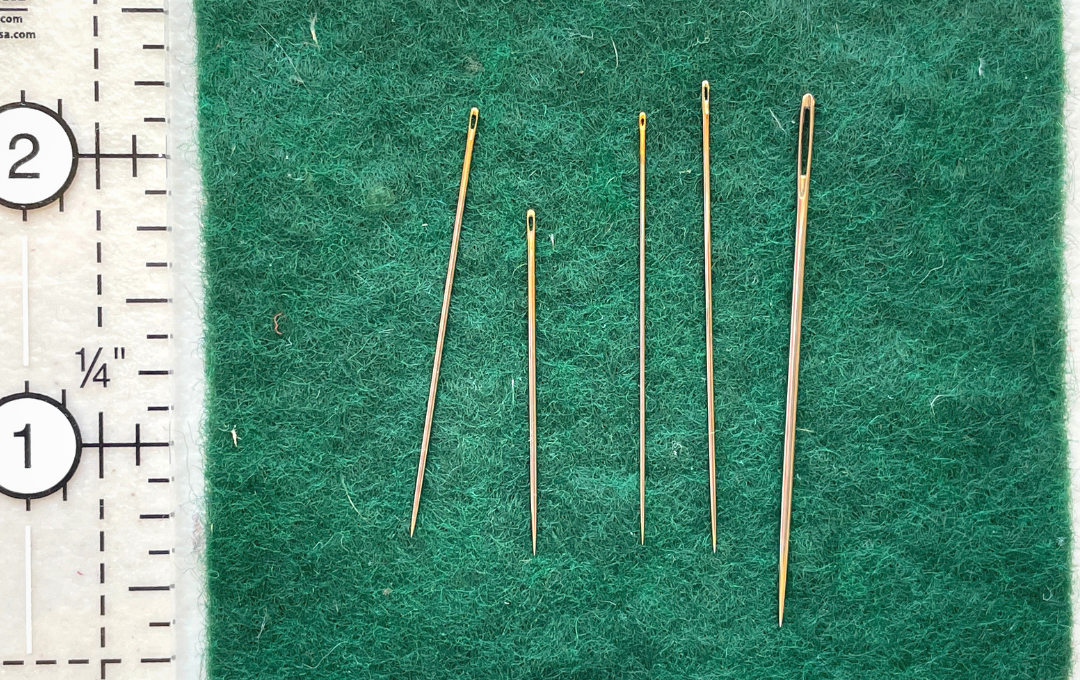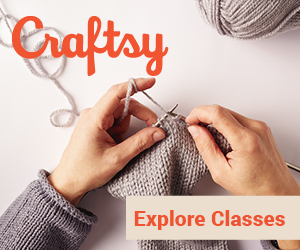
English paper piecing (also known as EPP) is a hand sewing technique in which fabric is wrapped around a paper template and then stitched together to create a specific design.
Because EPP is a hand sewing technique, hand sewing needles are one of the essential tools needed for English paper piecing. Without a sewing needle, you won’t be able to stitch your pieces together.
In this post, I’ll be discussing hand sewing needles - what makes them unique, and what is the best needle for English paper piecing.
Hand Sewing Needles
Hand-sewing needles are not all the same! The hand-sewing needle that you choose will determine the level of enjoyment you'll experience in your EPP practice.
Having the right needle can make all the difference between frustration and total bliss.
Stitching with the correct needle can save your hands from unnecessary strain, allowing you to sew for extended periods of time without wearing out your hands.
Anatomy of a Needle
Every hand-sewing needle has an “eye” at one end and a point at the other end. The portion between the eye and point is called the shaft.

The length of the needle will vary depending on the type and size of the needle. The size and shape of the “eye” will also vary between needle types.
Just like with machine sewing, the success of your project depends on selecting the correct needle for the fabric, thread, and the type of hand sewing you’re doing.
Using the wrong type of sewing needle is one of the most common mistakes novices and even some more experienced stitchers make. It can lead to needle breakage, difficulty working with the chosen fabric, and poor stitch quality. Needles can also wear out over time affecting the user experience and quality of the finished project.

Needle Types
There are hundreds of needle variations and specialist sewing needles for every use and discipline. For the purposes of this post, I’ll be discussing the needles that can be used specifically for English paper piecing projects.
The needle-type determines the overall length of the needle and the style of the eye. We’ll get into needle sizes a bit later.
Sharps
Sharps needles are medium length with a round eye and sharp point. They're a good needle for general hand sewing and can be used for a variety of sewing tasks. In this respect, a Sharp needle is similar to a universal needle for a sewing machine. If you decide to buy only one type of needle, I recommend getting Sharps.
- Round eye
- Sharp point
- Comes in sizes 1 to 12
- Great general purpose needle

Milliners/Straw
Milliners needles, also known as Straw needles, are traditionally used in the art of hat making. They're similar to Sharps but are a bit longer.
These needles feature a small rounded eye that is smaller than a Sharps's eye. They also feature a very sharp point, making them a wonderful needle for English paper piecing.
- Small eye
- Very sharp point
- Long shaft
- Comes in sizes 1 to 11
- Great for EPP
Quilting/Betweens
Quilting needles, also known as Betweens, are specifically designed for hand quilting. These needles are short. In fact, they're much shorter than Sharps needles. They have a round eye and sharp point similar to Sharps needles.
Betweens are a great needle for quick precise stitches. They're also great for detail work, especially on heavier fabrics.
- Round eye
- Sharp point
- Short shaft
- Sizes range from 1 to 12
- Best needle for hand quilting

Embroidery/Crewel
Embroidery needles are designed for hand embroidery. They have the same length and point as Sharps needles. However, their special feature is an elongated eye that accommodates thicker thread and embroidery floss.
It's a good needle for general stitching that requires thicker thread. These also work great when you want to use floss, ribbon, and other specialty threads
- Elongated eye
- Sharp point
- Comes in sizes 1 to 12

Needle Size
Every packet of needles has a number printed on it. The number, or sometimes range of numbers, refers to the diameter of the needle and the width of the eye.
The larger the number, the thinner the needle and eye. This is the opposite of machine needles! A size 11 hand needle is thinner than a size 5 hand needle.
Generally speaking:
- Sizes 1 to 4 are suitable for medium to heavyweight fabrics
- Sizes 5 to 10 are suitable for light to medium weight fabrics.
- Sizes 10 to 12 are suitable for fine fabrics or fabrics that have a tight weave such as batiks.

How To Choose The Best Needle for EPP
With all that said, what are the best needles for English paper piecing? To be honest, I can’t tell you exactly because it depends. What I can do is recommend some needles for you to try out.
You really need to experiment with different types and sizes of needles to determine what the best needle is for you, for the fabric you like working with, and for your comfort level. What’s comfortable for me, might be totally uncomfortable for you.

There are a few main things you need to consider before you can determine the best needles for your English paper piecing.
1. Sewing Task
The task you want to accomplish is the first indicator of which sewing needle you'll need. For piecing you'll want either Sharps needles or Milliners. If you're hand quilting, you'll want Quilting/Betweens needles. If you want to add embroidery to a project, you'll need some Embroidery needles.
2. Fabric
The fabric you typically use is going to determine the type of needle you'll need. For example, quilting cotton has a regular weave, meaning it's not tight nor is it loose. It's just right. A general-purpose needle like a Sharp would work great with quilting cotton.
On the other hand, a tighter weave fabric such as batik fabric will require a needle that is thinner with a thinner eye than a basic all-purpose needle. In this case, I recommend going with a Milliners/Straw needle.

3. Thread
The thread you use is also going to determine the type and size of needle you'll need. An all-purpose polyester thread that is 40-60 wt would work great with an all-purpose needle like a Sharps.
Whereas, a fine thread that is 100wt will require a fine needle that has a smaller eye to keep the thread from slipping out easily, such as Milliners needle.
If you want to use embroidery floss or other thick or decorative thread, then your best needle for the job is an Embroidery needle.
I'll be discussing thread in more detail in my next post. Subscribe to my newsletter to get notified when I publish future posts.
Best Needle Type for EPP
When you’re just starting out and learning English paper piecing for the first time, there is nothing wrong with using a regular hand sewing needle, like Sharp needles.
If you’re more experienced with EPP and want to up your stitching game, then I recommend trying Milliner needles, for sure. If you’re interested in hand quilting your projects, I recommend trying some Betweens/Quilting needles.

Best Needle Size for EPP
When it comes to the size of the needle (remember that little number on the packaging), it really comes down to personal preference. I encourage you to try out a few different sizes to get a feel for what you like best.
If you’ve decided to try Sharps needles for your English paper piecing, I recommend starting with needle sizes 9, 10, and 11. They are in the medium to the thin range and a good place to start.
Are you wanting to try out some Milliners needles? Then get some in sizes 9, 10, and 11 and see which size you like holding and stitching with the best.
Take note of how the needle moves through the fabric as you stitch your pieces together. If it doesn't glide smoothly, try out a different size until you find the one you like best.

If you're interested in doing some hand quilting on those EPP projects, get some Quilting/Betweens needles in sizes ranging from 8 to 12. Then practice hand quilting with each size to determine which one you like working with the best.
Embroidery needles will differ in length and in the size of the eye depending on the needle size. So I recommend choosing a needle that is both long enough to fit comfortably in your hand with an eye that's large enough for the thread you'll be using. This pack has a good range of sizes to familiarize yourself with.
Personally, for the fabric and thread that I use, I enjoy using a thinner needle for piecing my English paper piecing projects. So I typically use Milliners needles in size 11. Since I'm just getting into hand quilting, I'll be trying my Quilting needles out very soon!
Your Needles
Don’t be afraid to experiment with a variety of needle types and sizes. As you do, you’ll eventually discover what works best for you!
I hope I was successful in helping you to decide on the best needles for your English paper piecing projects.
Happy stitching!
Want More Inspiration?
Subscribe to our newsletter to get free patterns, tutorials,
updates, and inspiration delivered right to your inbox.





